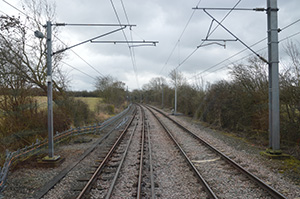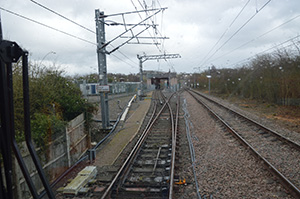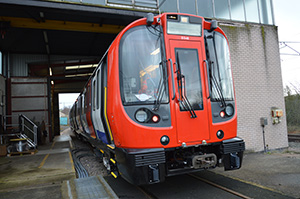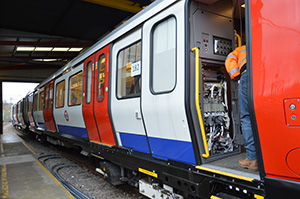In the middle of storm Doris, ORR Inspector Peter Darling visited Network Rail’s Rail Innovation & Development Centre (RIDC) test track – usually known as Old Dalby test track – in Leicestershire.


Peter was there to view the new signalling system being fitted to London Underground ‘S’ stock trains as part of the modernisation programme for the sub-surface lines (Metropolitan, Hammersmith & City, District and Circle).
The four lines are being completely re-signalled using Communications-Based Train Control (CBTC) to allow for increased capacity and the use of automatic train operation. This is a newer version of the current system that operates on the Northern Line, and both track and train equipment is being installed on all four lines.


The system works by sending out its messages via radio which the train acts on. Under normal operation, the train is automatically controlled by computers with braking and acceleration to maintain a safe distance from the train in front and stopping at the required stations.
At each station, the train driver will open and close the doors and then give the command signal for the train to start again. Between stations, drivers simply monitor the system and maintain general observation.
The Old Dalby track
Part of the former Midland Railway, the test track is approximately 13 miles long, with one line used for high speed testing up to 125mph and the other line for slower testing up to 60mph. The lines are equipped with 25KV AC overhead line equipment and also fitted with third/fourth rail DC traction equipment which enables the ‘S’ stock test train to run.
The test track became quite famous on the 17 July 1984 when a train was deliberately crashed into a derailed nuclear flask to test its integrity.
Rough weather
Due to very high winds from storm Doris, a proving test run had to be done to ensure the track was safe to run on. This involved driving the train manually at slow speed along the line.
After this, the train was then put into automatic mode, and we returned along the same route, with the train stopping at ‘virtual stations’ that had been built. The train performed flawlessly and it also enabled us to see the type of equipment that is being installed out on the trackside and in the train.
New and old signals
The railway line Peter travelled on to get to the site between Peterborough and Melton Mowbray is still equipped with semaphore signals and block working using bells to communicate between signal boxes. Yet five miles away from Melton Mowbray he witnessed the newest and most advanced signalling system in the UK – a train responding to signals automatically.
Peter comments “Probably the oddest thing for me from this visit was seeing a Tube Train in the middle of open green fields in Leicestershire – not something you expect to see!”

